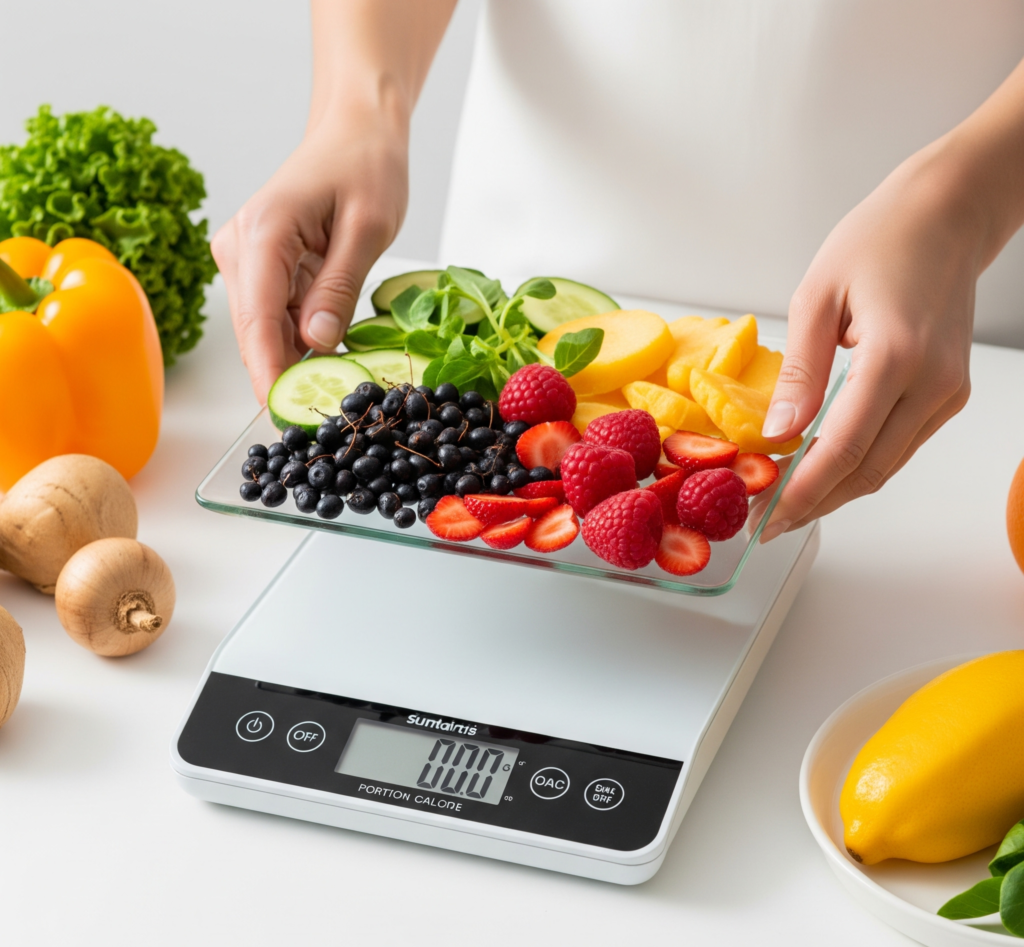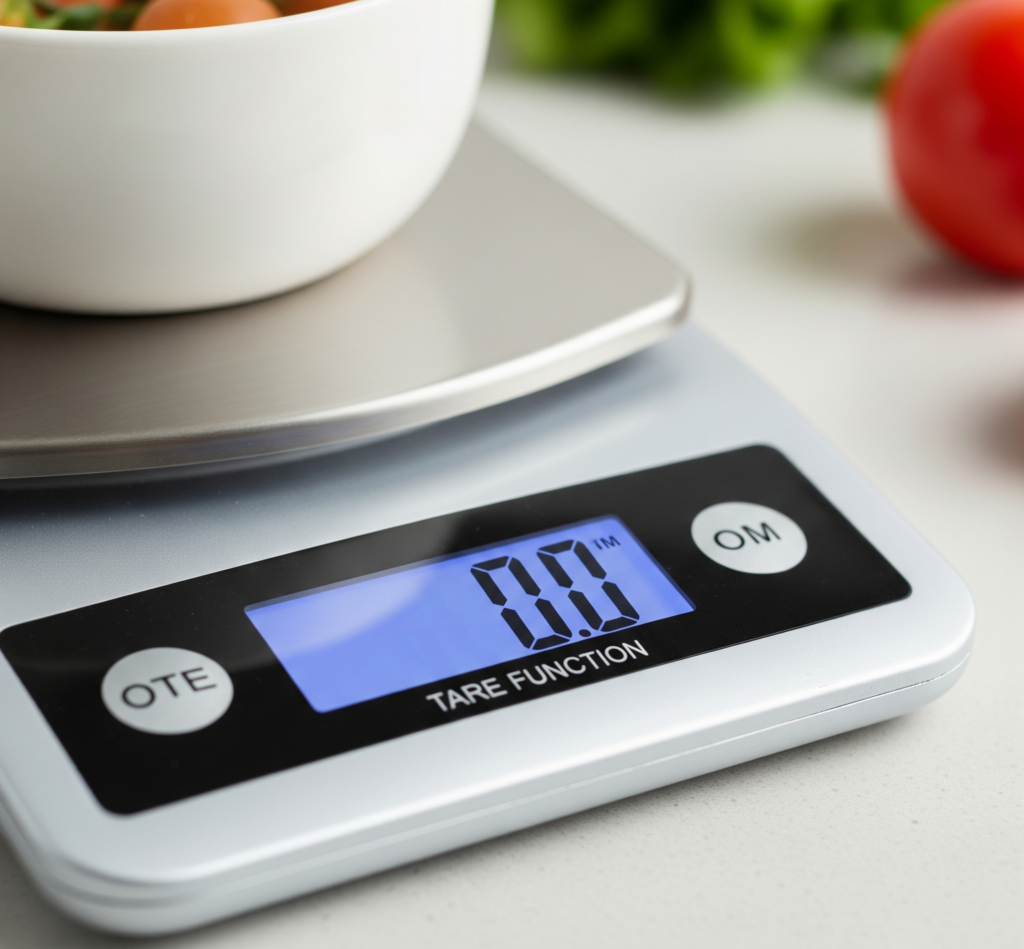
If you’re trying to eat healthier, track your macros, or lose weight, learning how to use a food scale can be a game-changer. Portion sizes can be misleading, and measuring food with cups or spoons often results in inaccurate tracking. But a kitchen scale provides precision — helping you control calories, hit your nutrition goals, and avoid overeating.
This guide will walk you through how to use a kitchen scale, how to weigh food on scale properly, and how to measure food with scale without confusion.
Why Use a Food Scale?
Whether you’re trying to eat healthier, track your macros, or lose weight, learning how to use a food scale can be a game-changer — and it pairs well with Tips to Boost Your Energy naturally throughout the day.
Here’s why it matters:
- Helps you avoid underestimating portions
- Supports accurate calorie tracking
- Makes meal prep more efficient
- Encourages mindful eating habits
Choosing the Right Kitchen Scale
Before we jump into how to use a food scale, make sure you’re using a digital kitchen scale that measures in both grams and ounces. Look for one with a tare function, which lets you subtract the weight of containers or plates.
Step-by-Step: How to Use a Food Scale
Let’s break down how to use a scale for food step by step:
- Place the Scale on a Flat Surface
Put the scale on a solid, level surface like a countertop. This ensures accuracy while you weigh your food. - Turn It On and Zero It Out
Turn on your scale and hit the “tare” or “zero” button. If you’re using a bowl or plate, place it on the scale first, then zero it out again. - Add Your Food
Now add the food directly to the plate or container. The number on the screen shows the exact weight. This is the key step in how to weigh food on scale for precision. - Switch Units If Needed
Use the unit button to toggle between grams, ounces, or milliliters, depending on what you’re measuring.
How to Measure Food with Scale for Calories

If you’re counting calories, the package usually tells you how many calories are in 100 grams or per ounce. By knowing the exact weight from your scale, you can calculate your intake with better accuracy.
For example:
If peanut butter has 190 calories per 32g and you weigh out 16g, you’re only eating 95 calories — not the full 190.
That’s the power of knowing how to use a food scale for calories — it cuts guesswork and supports your goals.
How to Use a Food Scale for Weight Loss
Tracking what you eat is one of the most effective ways to lose weight. Here’s how a scale helps:
- Prevents you from underestimating portions
- Helps manage high-calorie foods
- Keeps you accountable during meal prep
Most people don’t realize how easy it is to eat 2–3x the portion size if they aren’t weighing their food. That’s why learning how to use a food scale for weight loss is so valuable — it gives you clarity and control.
Looking to detox while staying on track with portions? Try our Pink Salt Weight Loss Recipe — it’s a simple morning drink that supports digestion and metabolism naturally.
Tips for Using a Kitchen Scale Daily

Here are a few tips to make using your kitchen scale part of your routine:
- Prep in bulk: Weigh ingredients while prepping meals for the week.
- Track as you cook: Weigh each item before tossing it in a pan.
- Weigh cooked vs raw: Know the difference between raw and cooked weight — meats and grains shrink when cooked.
If you’re still unsure how to use a kitchen scale, just start with a few items a day — fruits, meats, or rice — and build from there.
Common Mistakes to Avoid
- Forgetting to zero the scale before adding food
- Using unlevel surfaces, leading to incorrect readings
- Weighing items in packaging without subtracting weight
- Not checking if you’re measuring in grams vs ounces
By avoiding these errors, you’ll improve your food tracking habits in no time.
Final Thoughts
Now that you know how to use a food scale, you’ll be more confident in managing your portions, tracking calories, and making progress toward your goals. Whether you’re trying to lose weight, eat clean, or simply be more mindful, a kitchen scale is one of the most effective tools in your nutrition toolkit.
Explore more wellness solutions at The Health Clubs — your guide to natural living, detox, and everyday vitality.
FAQs: Food Scale Usage
These questions are separate from the blog content and crafted for additional SEO relevance.
Can I use a food scale to weigh cooked food?
Yes, but keep in mind that cooked food may weigh less due to water loss. For accuracy, weigh food raw when possible.
How often should I use a food scale when dieting?
Daily use is ideal, especially when you’re learning portion sizes. Once you’re confident, you can use it less frequently for maintenance.
Do I need to use a scale if I’m using meal tracking apps?
Absolutely. Apps provide estimates, but a food scale gives exact measurements for accurate tracking.
What’s the best unit to use — grams or ounces?
Grams offer more precision, especially when tracking macros. Many food labels also use grams.
Can I use my kitchen scale to weigh liquids?
Yes, most digital scales can weigh liquids in milliliters or fluid ounces, just ensure the container is tared first.
